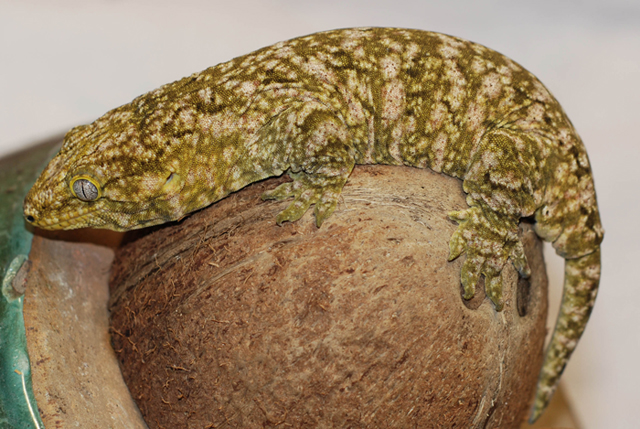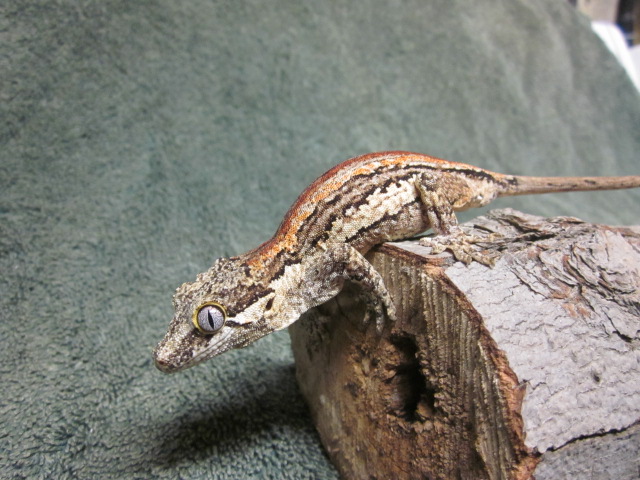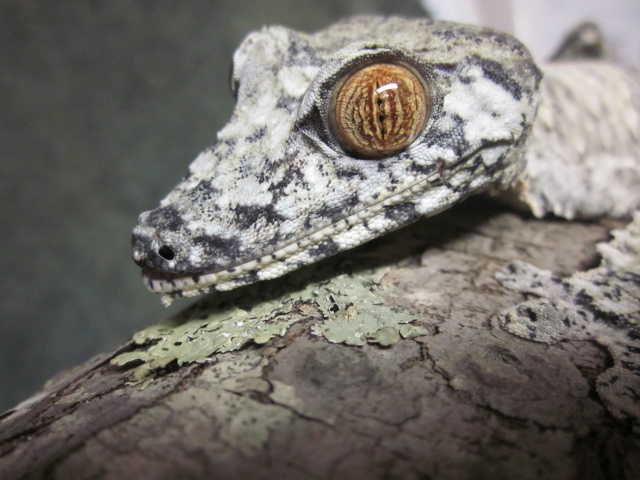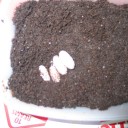Sometimes an interest is cultivated, groomed and planned like you would a trip to Mars, other times you fall into it like Alice into Wonderland. The story of myself and my “herpies” as I like to call them, is the latter. I was asked to write about how I got into reptiles, the twists and turns so far, and what the future may hold. Though I can’t guarantee it will be interesting, it’s the only story I’ve got so here it goes.
[ad#sponsor]
The Beginning- Leopard Geckos
In 2007, my family and I attended our first reptile expo. I went to have fun and my wife went to buy “educational pets” for our kids. We came home with, and promptly killed several reptiles due to ignorance. The lone survivor, Mr. Bill, is the one that started it all for me. After four months of purposefully avoiding her because I thought she was the most unnatural thing I’d ever seen, I googled “leopard gecko” and began to find out just how ignorant I was. Turns out our Tremper Albino was really easy to care for and had a winning personality to boot. Being a lover of all things that grow, I immediately began researching to learn all I could about them. Gecko Forums was very helpful in my early days, and I began to think breeding might be fun and would help me relax from the stress of self-employment.
Over the next few months, I obtained a few more leos and began to learn about genetics a bit while I planned my first breeding season and schemed for the future. I produced leos from two females that season and strangely, it helped me realize that my passions lie elsewhere in the reptile world. The diverse and confusing genetic morphs, ease of breeding and resulting competitive market, together with their terrestrial desert nature made them appeal to me less than two other types of geckos: Rhacodactylus and Uroplatus.
Rhacodactylus
I’m a typical American: I like stuff that’s big. So it’s only natural that I would be drawn to Leachianus geckos. Their size, build, husbandry and “over-sized pajama” look make them one of the most appealing geckos I can think of. I obtained two Isle D Leachianus Henkeli that have developed into beautiful specimens , but Leachianus are slow to mature and produce offspring. So in the meantime I began to consider other members of the Rhac family.

The Crested Gecko market being as flooded as it is made me not interested. Chahouas (Rhacodactylus chahoua) are still pretty expensive, Saras (Rhacodactylus sarasinorum) look like Crestless Cresteds to me and trachy’s (Rhacodactylus trachyrhynchus) are hard to find, so I was left with Gargoyle Geckos. Even though I have been quoted many times calling them “fat little 12 year old children”, what they lack in grace they make up for in personality and my five have quickly become some of my favorite herps. Sure, their tails are too long, their heads are too small, and they all look like they could lose a few pounds, but sometimes the repulsive thing ends up being what you love most about someone, right? Right… anybody? I seriously can’t imagine not keeping them, and can’t recommend them enough. They are more active than my leachies or cresteds I’ve kept, require less humidity and come in smokin’ hot “retro” colors. Seriously, you should stop reading this and just go get a couple right now.

Uroplatus
The first Uro I ever saw was a U. Phantasticus, and pretty much the coolest thing I’d ever seen. As I began to research about them, their fragility intimidated me so that I decided to hold off and focus on the rhacs for a while. But then a friend filled me in on the 2011 import quota changes, and it seemed like now or never. So in 2010, I built a climate controlled herp room/office in my basement and obtained 2.2 Fimbriatus and 1.1 Sikorae Sikorae. Everyone is doing well and I’m crossing my fingers for some eggs later this year. Habitat destruction, fragility, CITES status and their short lives make me feel a weight of responsibility for these beautiful animals, a sense of duty to produce more of them and to make others aware of their husbandry needs and status in the wild. Uroplatus are certainly not for everybody, but I plan to do my small part in keeping them around for folks to enjoy. I lost my first Uro to an infection a couple of months ago, and it was devastating. If you’re attracted to these geckos like I am, do your research and be prepared for some loss. They are not for the casual herper or the faint of heart, and each one is precious, so please think long and hard before purchasing any Uroplatus.
The Future
What does the future hold for Northstar Herp? My reptile journey has been something of a “Matrix” experience — I’m down the rabbit hole and can’t ever go back. The people, animals and the sub-culture have held me fascinated for years now, and I don’t see that changing any time soon. Having recently sold my leopard geckos, I am now able to set up my entire herp room for tropical animals. My plans are to expand my gargoyle collection through trades and purchases, the leachie collection through trades, and the Uroplatus through trades and purchases. Ultimately, I’d like to raise and sell enough Rhacodactylus to help fund and support my Uroplatus labor of love, ending with a large and diverse collection of both. Unless something unforeseen happens, you’re going to see Northstar Herp around for many years to come.

Other things currently I’m working on include:
Building connection within the herp community, both for support and bloodline trades.
Participating in a Uroplatus bloodline database- http://www.uroplatus.net/
Establishment of a well maintained web presence, caresheets, articles etc.
Possibly offering custom enclosure building
A possible educational video production project on some obscure geckos
A possible importation of a species of gecko virtually non-existent in the U.S.
[ad#250]



Great article. This encompasses so many people’s entrance into the hobby!
Great Article, man! Very well done. Looking forward to seeing more.
Very nice Kevin!!! Great writeup, great success story, and look foward to more great info from you in the future!! Awesome!
Fascinating, and enough literary references to get me hooked. Excellent writing and it’s good to see that your fondness for the beasties of the world is deepening.
Very informative. But….
I like how you didn’t just inform, or “educate,” but shared a story and passed on your joy.